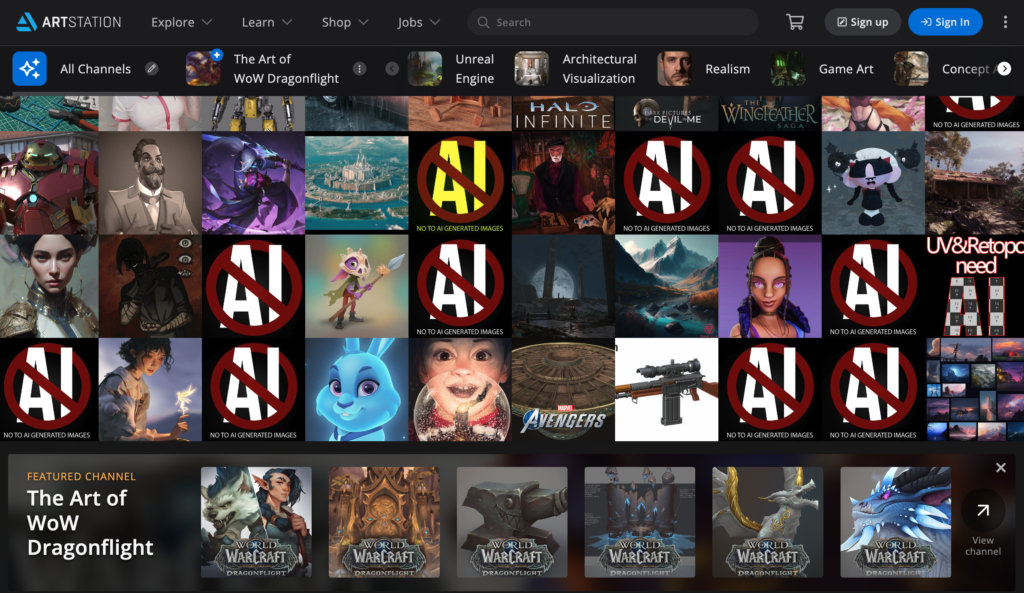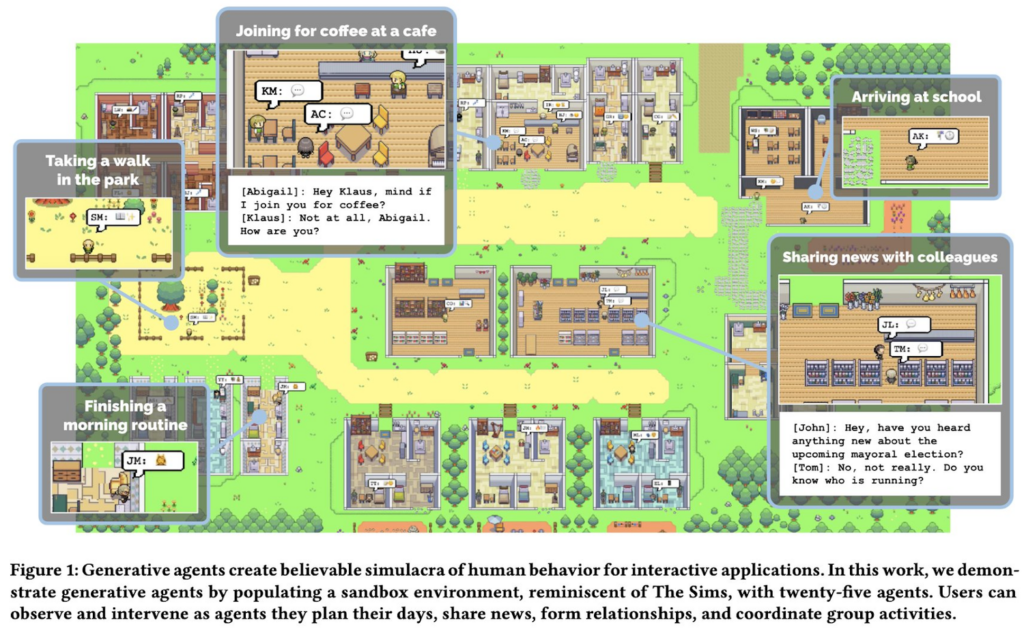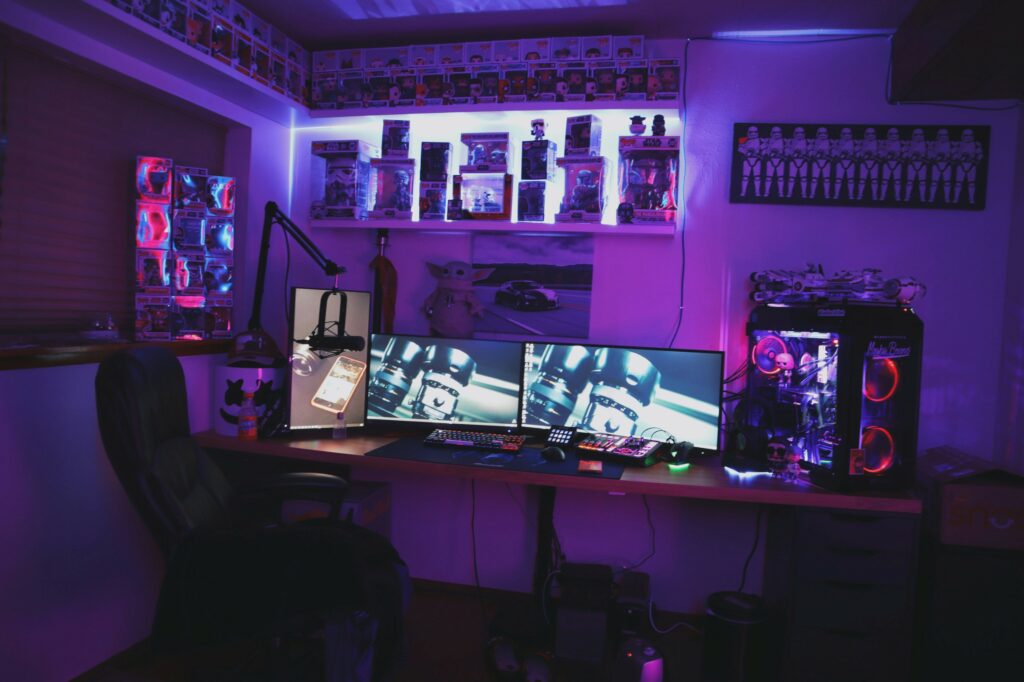Hi Everyone. Welcome to another issue of Naavik Digest! If you missed last issue, be sure to check out our analysis on Warner Bros.’ MultiVersus and what the game’s temporary shutdown says about the state of live service gaming. This issue, we’re taking a look at the state of generative AI in game development, taking stock of what studios are actively using the technology or considering doing so, and discussing how it might reshape game production as we know it.
Scopely Acquired, Sony Hired

What does the Mario movie mean for games? What is Dream Games’ follow-up to Royal Match? Where does Phillip La go after Sky Mavis? Was the Scopely acquisition a good deal? What does Sony’s cloud hires say about its strategy? What wild thing has AI done now? Dive into the latest games business news with Aaron Bush, Anil Das-Gupta, Tammy Levy and your host Devin Becker.
You can find us on YouTube, Spotify, Apple Podcasts, Google Podcasts, YouTube, our website, or anywhere else you listen to podcasts. Also, remember to shoot us any questions here.
#1: Gaming’s Generative AI Boom is Just Getting Started
Written by: Matt Dion

It was only a little more than four months ago that OpenAI’s ChatGPT was unleashed on the public, and roughly six months since we first dug into the topic of generative AI (GenAI) in gaming for Naavik Digest (“Why AI Will Upend the Games Industry”). Given that we’ve now had a couple quarters to process these developments, it seemed like a good opportunity to gauge the market’s early reactions and get a feel for how industry practitioners are putting these powerful new tools to work in the game development pipeline.
The reactions to GenAI’s barreling hype train have been, predictably, polarized. Critics have voiced a range of concerns about the use of generative AI. Some hold the view that the technology is not applicable to real game development or cannot produce work that meets commercial game standards. Others express unease about proper creator attribution, legal protection of copyrighted works, and lack of safeguards against theft. Furthermore, many industry practitioners worry that automation may replace jobs.
As a humble games industry observer, I’ll refrain from offering any professional analysis on the more extreme AI doubters citing the potential “loss of control of our civilization”. However, as someone who frequently uses ChatGPT and other GenAI tools to augment my work, I struggle with how to address the pushback.
Many critics have been quick to compare the rise of GenAI to the previous hype cycle of crypto and NFTs. Indeed, both sets of technologies have existed previously in one form or another for several years prior to the recent breakthroughs that have pushed them into the spotlight. AI and web3 also both have their own cadre of loud advocates proclaiming their soon-to-materialize revolutionary impacts.
Unfortunately, in both cases many of these advocates have little practical experience making games themselves, creating an obvious narrative weakness that gatekeepers have been all too happy to point out. Of course, there also seems to be a great deal of anti-tech and anti-VC sentiment baked into this discourse, too.

Nevertheless, GenAI has continued to impact all levels of the games industry. Given that most of the companies we’ll cover below have been quite forthcoming about their use of generative AI, we can assume that they are at least open to the idea of augmenting their game development processes with GenAI, if not outright supportive of – and even betting on – the continued proliferation of GenAI tools. Even GenAI’s most ardent critics concede that the technology might be useful in some limited scenarios, such as prototyping, creating mood boards, filling in flavor text, and so on. Coincidentally, these menial tasks have been among the first to be addressed by GenAI tools.
Ubisoft recently unveiled its Ghostwriter AI tool, used to generate “barks” for NPCs. These short phrases are among the most tedious for narrative designers to create. By automating away some of this repetitive labor, Ghostwriter unlocks “more time and creative freedom” for these developers. Similarly, Mighty Bear Games has found success using generative AI tools to transform rough sketches into stylized assets. They estimate that this will save “1000’s of hours a year”. The company’s CEO, Simon Davis, detailed a number of other use cases the studio has experimented with in an excellent Twitter thread.

Others in the “pro” GenAI corner are pushing forward with a panoply of experiments. NPCs, skyboxes, 2D & 3D game assets, mocap animation, coding, and countless other use cases throughout the game development pipeline have been subject to early explorations with generative AI. Some of the more adventurous efforts (such as The Culture DAO and its Geppetto AI, or Oneirocom and MagickML) are even reimagining the game creation process from the ground up with AI at its core.
To that end, we’ve also seen increased investment activity chasing these innovations – a noteworthy development given that overall VC investment has fallen for seven straight quarters, with gaming VC deals specifically returning to early 2021 levels in terms of both total deal count and value (according to Konvoy’s Q1 2023 Gaming Industry Report). Recent highlights here include PLAI Labs $32M raise (AI & web3 social platform), $6M to Scenario (GenAI game assets), and Latent Technology’s $2.1M round (AI-driven game animations), among others. Generative AI also featured prominently at the recent Game Developers Conference, where heavy-hitters like Roblox and Unity made announcements unveiling new AI tooling and initiatives, publishers like NCSOFT and King debuted ambitious new projects, and numerous AI meetups and hackathons convened on the sidelines.
Meanwhile, some of the more risk-averse Western AAA publishers, such as Take-Two and EA, have been largely absent from the conversation around generative AI. Perhaps put off by audience backlash to revelations of AI usage in popular games, such as those made by developers Squanch Games and Ninja Theory, these incumbents have taken a more cautious approach thus far. EA co-CTO Marija Radulovic-Nastic has gone on record stating that AI would have “a big impact on the way we make games”, and Take-Two CEO Strauss Zelnick has discussed how AI will “raise the bar”, but neither has offered much in the way of specifics.
Regardless of where these various entities fall along the ideological spectrum, it’s clear that advocates will continue to push forward with experiments in game development. As generative AI tools continue to improve and expand, it’s likely that more companies will embrace them in some capacity. The potential benefits of automating tedious tasks and unlocking more creative freedom for game developers are simply too great to ignore.
One of the latest trends, inspired by projects like BabyAGI and AutoGPT, has been the use of so-called “autonomous agents” capable of recursively generating and executing tasks. These tools can break out of the natural language shell of ChatGPT and connect to other applications capable of performing tasks like web scraping, queries, document creation, and more.
Andrej Karpathy, a founding member of OpenAI and former head of AI at Tesla, has called these the “next frontier of prompt engineering.” A recent Stanford study used a similar type of generative agent to simulate human behavior in an “interactive sandbox environment inspired by The Sims.”

While scaled applications to AAA game development may still be out of reach, the momentum behind the technology is undeniable. I tend to agree with Strauss Zelnick’s take that the quality bar for game making – particularly at the highest levels of AAA development – will only rise as more and more developers learn to incorporate these tools into their workflows.
However, I also believe that the barrier to entry for independent game development will continue to fall as the tools of creation are increasingly democratized.
Generative AI may represent a radical change to how games are made today, but in the near future it will become the norm. As tools develop and workflows adjust to take advantage of these newfound efficiencies, we could potentially see a flood of new games hitting the market.
This moment has interesting parallels to the breakout of indie games in the mid-aughts. At that time, new development tools like Unity and GameMaker were rapidly simplifying the game creation process for small teams. Meanwhile, platforms like Steam and XBox Live Arcade opened new distribution channels to a wider audience of indie developers. Together, this confluence of developments led to an explosion of new games that had not previously been considered commercially viable.
Now consider this historical example in the context of the ongoing proliferation of GenAI tools. Concurrently, we are witnessing the upward trajectory of hyper-accessible UGC platforms like Roblox and UEFN. Taken together, it’s abundantly clear that game making has never been more accessible.
This has several potential implications. One is that we could see a burgeoning “middle class” of developers and publishers, capable of creating and distributing games at scale with newfound levels of efficiency and cost-effectiveness. Another possibility is that we will see a flood of mass-produced, low quality, AI-authored garbage, particularly on platforms like asset stores or UGC destinations (Konvoy has a good analysis of this particular scenario here).
Personally, my hope is that generative AI will unlock new forms of game design that have heretofore been unachievable. Deep personalization, endless content, novel design – these are the possibilities that have me excited. Admittedly, this is an optimistic perspective that glosses over many legitimate concerns, but it’s also why the momentum behind GenAI is so supercharged.
#2: Mario Madness, Sony’s ‘Cloud’y Future & NPC Breakthroughs

The Super Marios Bros Movie is breaking records. The movie’s opening weekend amassed $377 million in box office receipts, which broke the record for both the largest video game adaption opening (surpassing World of Warcraft) and the largest animated movie opening (surpassing Frozen 2). We don’t know what the terms are between Nintendo and Illumination, which also made hits like Despicable Me and Secret Life of Pets, but it’s safe to say that with the movie on track to tip the $1 billion mark both companies will walk away with nice profits. What does this mean for Nintendo? Well, it’s hard to see how the company won’t further explore its transmedia options, although it’ll take a few years for any follow-ups (for Mario or another IP). What does this success mean more broadly? Given that the largest movie and show of the year (so far) are Super Mario Bros. and The Last of Us, respectively, it’s clear we’re now in a golden age of video game adaptations. Expect Hollywood to accelerate its bidding for more gaming IP, which will likely lead to more great adaptations and some less than great ones, too. Either way, expect your favorite gaming IPs to hit more screens in the years to come.
Sony looks to the cloud. Despite no official announcements yet, recent job openings show that Sony is refocusing on cloud gaming. Also, rumors about a new handheld device (codenamed Q-Lite) indicate that handheld gaming might be central to the company’s cloud gaming strategy. We’ll learn more in time, but at a high level the efforts make some sense. Enabling players to have access to their games when away from their consoles is one way to boost engagement, and creating new hardware to facilitate that engagement enables Sony to control the experience. The rumored price point of approximately $200 may also ensure that the attach rate is signficantly higher than the PSVR2, which is $549, must be tethered to the console, and requires additional game purchases. Of course, execution is everything, and there remain key questions. Most notably, will the experience of cloud streaming to dedicated devices play well? And are there other key pillars to the company’s cloud gaming ambitions? However you slice it, it’s clear that Sony continues to walk its own path; whereas Nintendo has handheld gaming built into its console, Valve created its own dedicated handheld hardware, and Xbox’s cloud ambitions are focused around a subscription it wants everywhere and not a core device, Sony will likely keep its audience focused on PlayStation hardware just as much as PlayStation games.
Are AI NPCs going to be transformative? A recent research paper titled "Generative Agents: Interactive Simulacra of Human Behavior" has been making waves. The study created a sandbox environment similar to The Sims, filled with generated agents backed by a large language model (LLM) capable of simulating normal-ish human behavior. These agents observe and interact with each other, forming opinions and synthesizing memories into higher-level reflections that influence their future behavior. What's most notable is the emergent behavior that arises, with a single prompt leading to a chain of events that compounds on itself in realistic ways. For example, when one agent is prompted to plan a Valentine’s Party, it leads to invitations, other agents meeting each other, asking others out on dates, and then coordinating to ensure they get to the event on time. This is a mundane example, but the idea of AI-instigated emergent behavior has potentially large ripple effects. The implications extend beyond gaming, but within gaming it’s hard to imagine how this new technology won’t at least transform the way teams can use NPCs, especially in open world games. It also raises a bunch of questions, namely where the line should be drawn regarding what emergent non-planned behaviors should be permitted or off-limits. Game designers have exciting challenges ahead of them in the years to come.
In Other News
💸 Funding & Acquisitions:
- Social Future raised $6M to build AI-driven virtual social platform. Link
- Paxie Games raised $3M in a funding round led by Ludus Ventures. Link
- AI gaming platform Skillprint raised $3.5M in pre-seed funding. Link
📊 Business:
- Sony is gearing up for a new cloud gaming push. Link
- AI is already taking video game illustrators’ jobs in China. Link
- Gamers renew legal challenge to Microsoft's Activision bid after setback. Link
- Ubisoft Plus subscription available on Xbox, costs more than Game Pass. Link
🕹 Culture & Games:
- Suicide Squad: Kill The Justice League delayed to 2024. Link
- The New York Times is developing new games, but not too many. Link
- The Super Mario Bros. Movie smashed multiple records with its opening weekend. Link
👾 Miscellaneous Musings:
- On Xbox, caveats and mismanaged expectations. Link
- Why classic gaming names like MapleStory are adopting blockchain tech. Link
- Fortnite and Roblox are dueling for the future of user-built games. Link
This Week In Naavik Pro

Looking for more great games industry analysis? Check out Naavik Pro!
Here’s what the Naavik Pro team published this past week:
- Monthly genre report covering Arcade, Hypercasual, Racing, and Sports genres.
- Analysis of Savvy Games Group’s acquisition of Scopely.
- Breakdown of the winners and losers in gaming stocks in 2022.
- Web3 market update for the month of March.
- Recap Sky Mavis’ major Ronin expansion.
- Breakdown of Champions Ascension’s whitepaper v2.
- Dive into Dream Games’ new Match 3 title Royal Kingdom.
- New Game Launch Radar featuring Bump! SuperBrawl and Undawn.
This upcoming week, we’ll publish a game deconstruction of web3 multiplayer survival game Undead Blocks; a look at Splinterlands Phase 1 land expansion and The Sandbox’s 2023 roadmap; an analysis of the current media environment for gaming IP in light of The Super Mario Bros. Movie’s record-breaking success; and a check in with esports company Skillz in light of its troubling stock performance. We’ll also have much more to come after that!
If you’re interested in learning more or signing up, request a demo below.
🔥Featured Jobs
- Immutable: Economy Designer (Sydney, Australia; Remote)
- Backbone: Product Manager (Remote)
- Carry1st: Head of Growth, Games (Remote)
- Astra Fund: Operations & Finance Manager (Remote)
You can view our entire job board — all of the open roles, as well as the ability to post new roles — below. We've made the job board free for a limited period, so as to help the industry during this period of layoffs. Every job post garners ~50K impressions over the 45-day time period.








